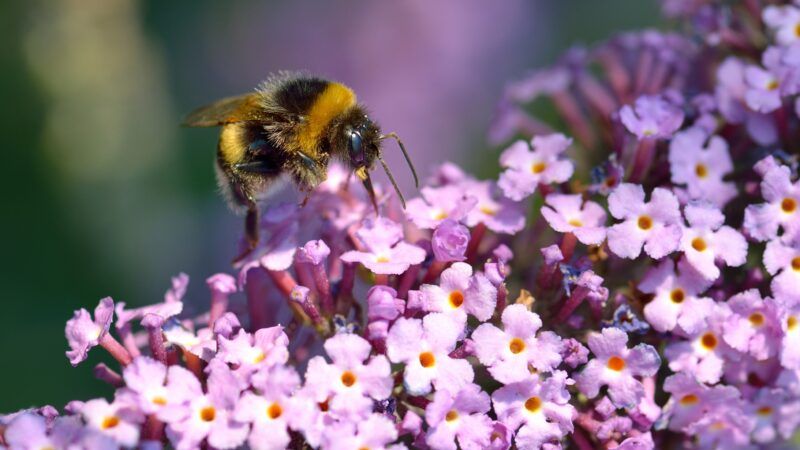California Court Rules That Bees Are Fish
Insects aren't a category protected by the California Endangered Species Act. So state officials classified four bumblebee species as fish to get them listed.

In the latest installment of a yearslong legal debate over whether bees are fish, a California appeals court has ruled that, for the purposes of the state's Endangered Species Act, they are.
Environmentalists petitioned the California Fish and Game Commission to add four bumblebee species to the list of at-risk plants and animals governed by the California Endangered Species Act (CESA). Roughly 250 plant and animal species are protected by the CESA, which prohibits the import, export, possession, purchase, or sale of listed species. The Commission provided notice in 2019 that the four bumblebee species were candidates for CESA protection, prompting lawsuits from agricultural groups that were concerned about the costs of adherence to the new requirements.
They also questioned the Commission's legal authority to designate bumblebees for protection. Insects aren't a protected category under the CESA. Candidate species may include "a native species or subspecies of a bird, mammal, fish, amphibian, reptile, or plant," according to the state's fish and game code. And while California does protect some species of insect, these are listed under the federal Endangered Species Act. That left state officials without an intuitive avenue.
Rather than let pesky biological standards get in the way, they had concluded that designating bumblebees as fish was the most fitting way to get them protected under the CESA. Legally, a fish refers to "a wild fish, mollusk, crustacean, invertebrate, amphibian, or part, spawn, or ovum of any of those animals." Because bumblebees are invertebrates—a protected subset of fish—the Fish and Game Commission argued that they could reasonably be designated as fish per the CESA's terms. The trial court wasn't having it.
But yesterday, the California Court of Appeal for the 3rd District ruled that bees could in fact qualify as fish, despite the (understandable) challenge brought forth by state almond growers and other groups. "Although the term fish is colloquially and commonly understood to refer to aquatic species, the term of art employed by the Legislature in the definition of fish…is not so limited," reads the decision. "Accordingly, a terrestrial invertebrate, like each of the four bumble bee species, may be listed as an endangered or threatened species under the Act." Invertebrates is certainly a broad category, and bees admittedly don't have backbones, but the ruling boggles the mind nonetheless.
"We certainly agree section 45 is ambiguous as to whether the Legislature intended for the definition of fish to apply to purely aquatic species," the decision continues. "A fish, as the term is commonly understood in everyday parlance, of course, lives in aquatic environments." Because a snail (a terrestrial invertebrate) was previously listed under the Act "and could have qualified as such only within the definition of fish," the court opted to liberally construe the Act and the legislature's intent when drafting it.
As Volokh Conspiracy blogger and law professor Ilya Somin points out, courts may interpret a "term of art" in seemingly counterintuitive ways. Those rulings frequently lead to confusion and messy implementation. "Imagine an ordinary Californian reading the state Endangered Species Act to try to figure out what actions might violate it. Such a person would be hard-pressed to figure out that harming bees is a no-no because the latter legally qualify as fish!" Somin argues.
Californians may now have to worry about what else qualifies as a fish since yesterday's decision establishes that "the Commission may list any invertebrate as an endangered or threatened species" if the invertebrate meets the requirements of the relevant statutes. Enter ladybugs, scorpions, moths, and butterflies.
https://twitter.com/jtlevy/status/1531769888397742080


Show Comments (114)